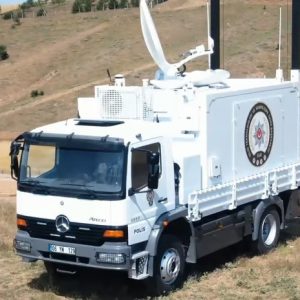In the ever-evolving landscape of UAV (Unmanned Aerial Vehicle) technology, a groundbreaking innovation has emerged – a Revolutionizing Dynamic Target Tracking in GPS-Denied Environments. This pioneering approach holds the potential to reshape the way surveillance and reconnaissance operations are conducted, offering enhanced accuracy and efficiency even in challenging conditions.

The Challenge of GPS-Denied Environments
Understanding GPS Limitations
In conventional UAV operations, GPS (Global Positioning System) plays a pivotal role in providing real-time location data for accurate navigation and target tracking. However, many scenarios, such as urban environments with tall buildings, dense foliage, or electronic warfare interference, can lead to GPS signal disruption or denial. This limitation poses a significant challenge to maintaining accurate target tracking and surveillance capabilities.
Dynamic Target Tracking: A Crucial Capability
The Essence of Real-Time Tracking
Dynamic target tracking is a fundamental capability for UAVs engaged in surveillance and reconnaissance missions. It involves the continuous adjustment of the UAV’s position and orientation to precisely monitor and follow moving targets. Traditional methods heavily reliant on GPS may falter in GPS-denied environments, necessitating the development of innovative techniques to ensure uninterrupted and accurate tracking.
The Innovation: Overcoming GPS Limitations
Beyond GPS: New Tracking Paradigm
The cutting-edge method for dynamic target tracking in GPS-denied environments represents a paradigm shift in UAV technology. By leveraging advanced sensor systems, onboard computing power, and machine learning algorithms, UAVs can now autonomously navigate, adapt, and track targets without relying solely on GPS signals. This innovation enables UAVs to perceive their surroundings, make real-time decisions, and dynamically adjust their flight paths, ensuring uninterrupted target tracking.
Enhanced Surveillance and Reconnaissance Strategies
Redefining Operations
The adoption of this new tracking method significantly enhances surveillance and reconnaissance strategies. UAVs equipped with dynamic tracking capabilities can seamlessly navigate complex environments, maintain constant visual contact with targets, and adapt to changing conditions. This not only improves the accuracy of data collection but also enhances the overall effectiveness of missions, enabling military and civil applications alike.
Future Implications and Advancements
Shaping the Future of UAV Technology
The introduction of dynamic target tracking in GPS-denied environments marks a pivotal step toward the evolution of UAV technology. As innovation continues, the integration of advanced sensors, artificial intelligence, and collaborative communication systems promises to further refine the accuracy, efficiency, and adaptability of UAV operations. This advancement holds the potential to unlock new possibilities in fields ranging from defence and security to disaster response and environmental monitoring.
FAQs (Frequently Asked Questions)
Q1: What is dynamic target tracking in UAV technology?
A1: Dynamic target tracking refers to the UAV’s ability to continuously monitor and follow moving targets in real-time, adjusting its position and orientation accordingly.
Q2: Why is GPS-denied tracking important for UAVs?
A2: GPS-denied tracking ensures uninterrupted target monitoring in scenarios where GPS signals are disrupted or denied due to factors such as interference or dense surroundings.
Q3: How does the new tracking method work in GPS-denied environments?
A3: The new method utilizes advanced sensors, onboard computing, and machine learning to enable UAVs to autonomously navigate, adapt, and track targets without relying solely on GPS signals.
Q4: What are the benefits of dynamic target tracking for surveillance and reconnaissance?
A4: Dynamic target tracking enhances accuracy, enables seamless navigation in complex environments, and adapts to changing conditions, thereby improving the effectiveness of surveillance and reconnaissance missions.
Q5: How might this innovation impact other industries beyond defence?
A5: The innovation could have applications in disaster response, environmental monitoring, and various civilian sectors that require accurate and adaptable data collection.
In conclusion, the new method for dynamic target tracking in GPS-denied environments signifies a transformative leap in UAV technology. By overcoming GPS limitations and adopting advanced sensor systems and machine learning, UAVs are poised to redefine the accuracy and efficiency of dynamic tracking. As this innovation continues to unfold, it promises to reshape the landscape of surveillance, reconnaissance, and beyond, opening doors to new opportunities in various sectors.










